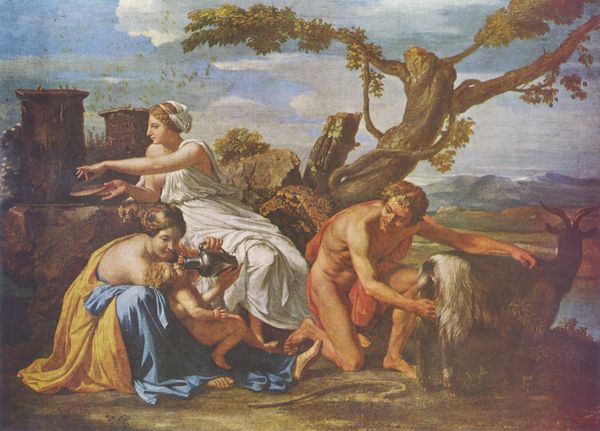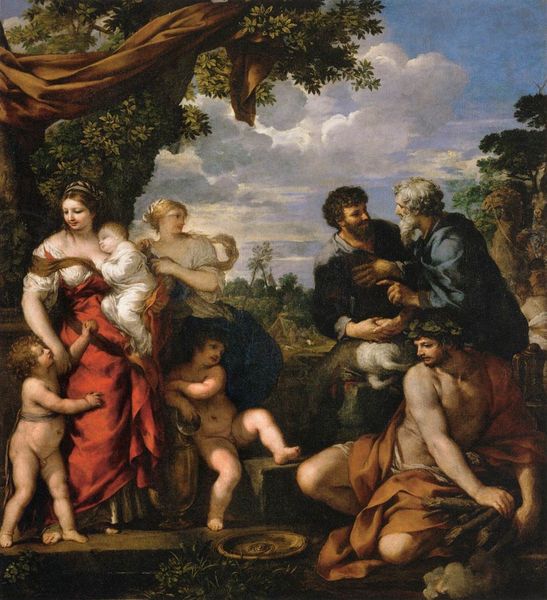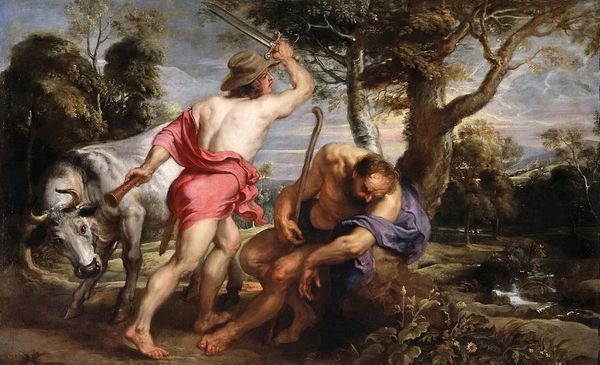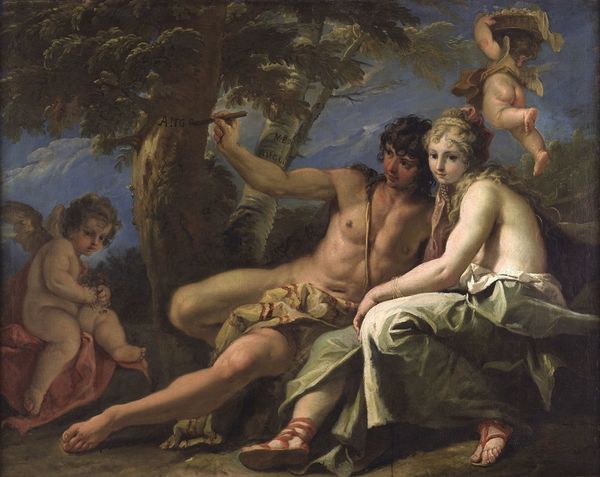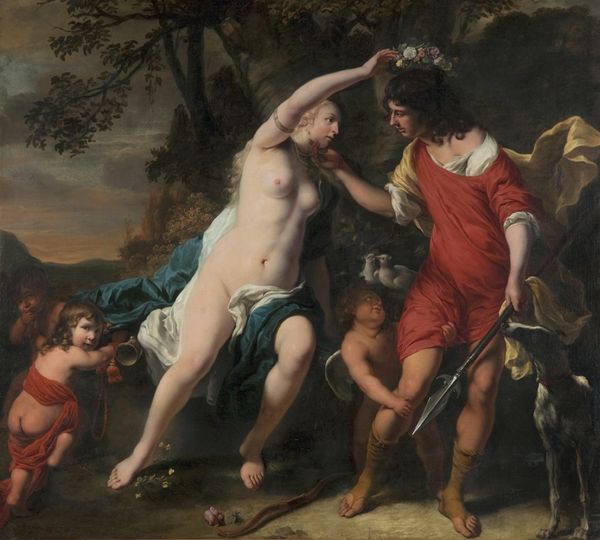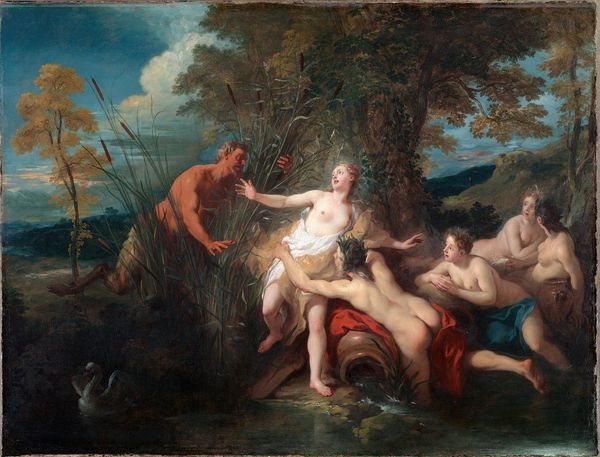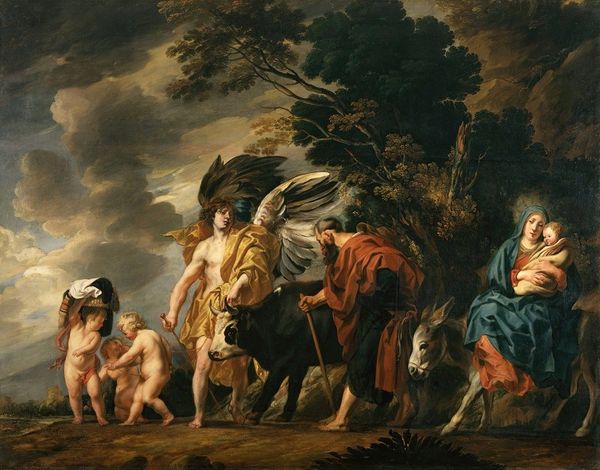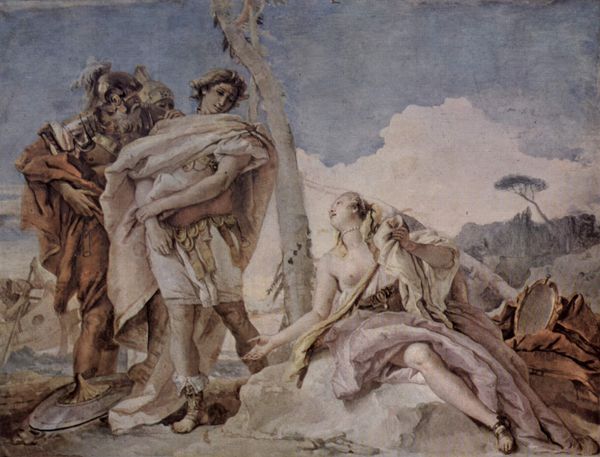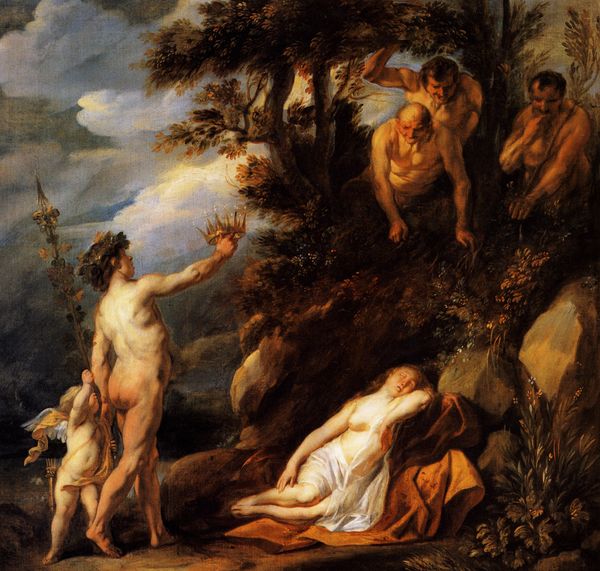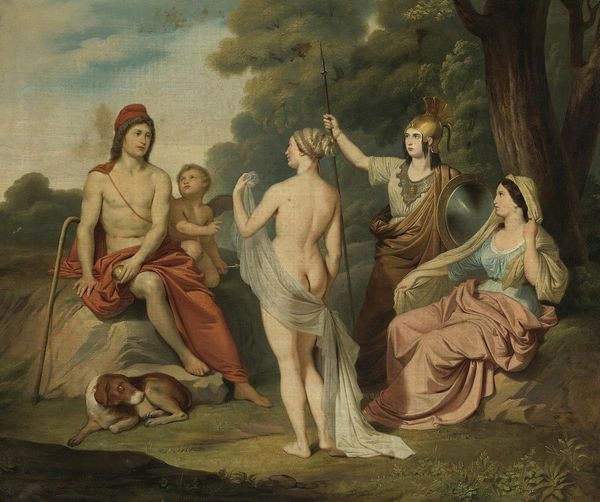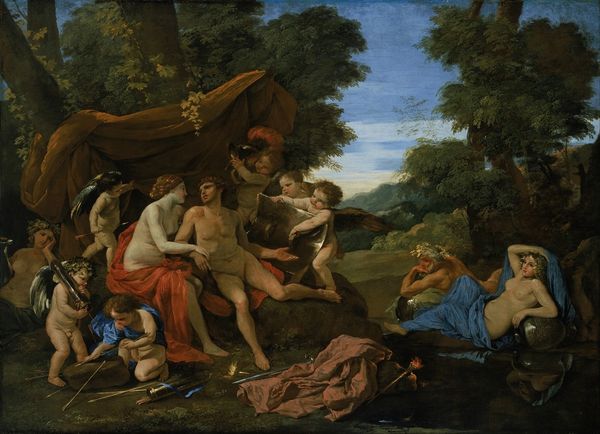
painting, oil-paint
#
allegory
#
baroque
#
painting
#
oil-paint
#
landscape
#
figuration
#
genre-painting
#
rococo
Dimensions: height 99.5 cm, width 146.5 cm, depth 6.5 cm
Copyright: Rijks Museum: Open Domain
Editor: So, this is Jacob de Wit’s “Paris and Oenone,” painted in 1737, using oil paint. The scene feels very staged, almost theatrical. What strikes you about this artwork? Curator: I see a potent illustration of power dynamics masked within a pastoral setting. This painting, while seemingly a lighthearted Rococo scene, speaks volumes about the era's idealized visions of love and beauty, particularly concerning gender roles. The story, taken from classical mythology, involves Paris abandoning Oenone for Helen, a choice that ultimately leads to the Trojan War. De Wit’s rendering highlights the precarious position of women, Oenone, in this case, who is relegated to a secondary status once a more politically advantageous option emerges. Editor: Politically advantageous? You mean Helen’s beauty gave Paris more social status? Curator: Precisely. Helen represented power, access, and solidified status, elements absent in Paris’s relationship with Oenone. Consider how Oenone is positioned in the landscape, literally and figuratively ‘under’ Paris. And what about the cherubs playing within the scene? Do they signify innocence or a disruption of the natural world, innocence corrupted? Editor: I guess I always thought of paintings like this as just pretty scenes. Curator: They’re designed to be pleasing, certainly. But let’s push beyond that. How does de Wit use allegory to either critique or reinforce contemporary values around love, power and social standing? Do you notice any symbols that hint towards potential tension? Editor: It’s interesting to think of the painting as a commentary rather than just an illustration of a story. Thinking about it as a staged depiction where the people are only important based on beauty, maybe the entire artwork could have deeper implications beyond beauty and mythology. Curator: Exactly. The canvas is not merely a window into a mythological past but a mirror reflecting the societal anxieties of de Wit’s present, encouraging us to challenge these imposed cultural norms and prescribed roles.
Comments
No comments
Be the first to comment and join the conversation on the ultimate creative platform.
